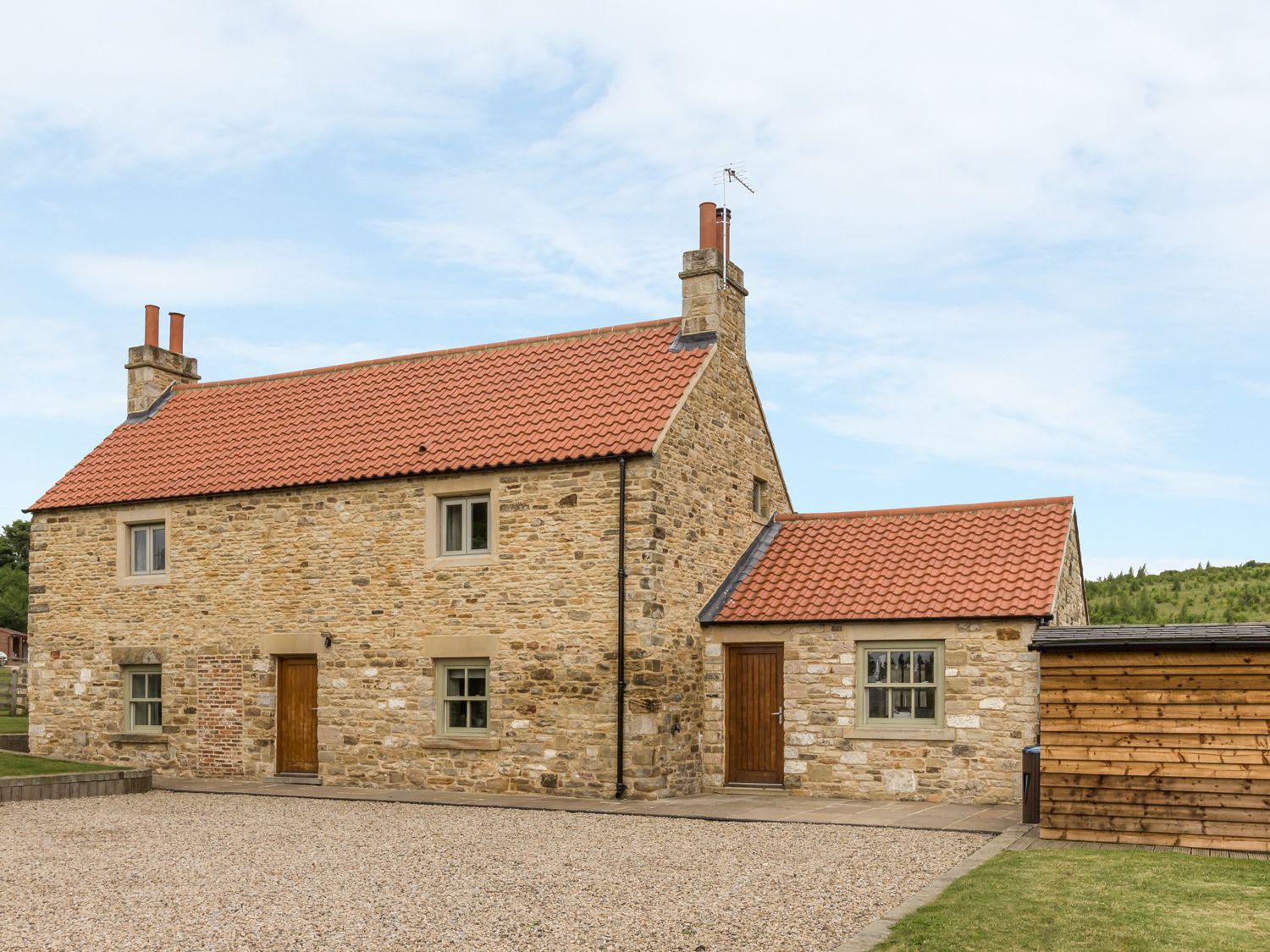Piercebridge Roman Bridge
Just imagine the pleasure we felt when - on a long drive home - we spotted a sign for a Roman bridge!
We were crossing County Durham and - without having planned to do so - had stumbled over the site of Piercebridge Roman Bridge. We'd seen some grand Roman bridges on TV whilst watching the Tour de France and Giro d’Italia, but we'd not heard that a Roman bridge had survived in the north of England. So... of course... we had to stop and find out!
We'd just had a fantastic short break in Northumberland and were returning home after visiting our last - planned - point of interest at Heavenfield. For some reason, while we were driving south to join the A1M, our SatNav directed us off the A68 and onto the B6275, which follows a stretch of Dere Street, an ancient Roman road connecting York and the north of England. Along that road lies Piercebridge, which has a beautiful bridge spanning the River Tees.
At the very end of the village, where the road bends sharply right, we spotted a sign. "Roman Bridge." There was even a convenient car park to make stopping and exploring an easy choice.
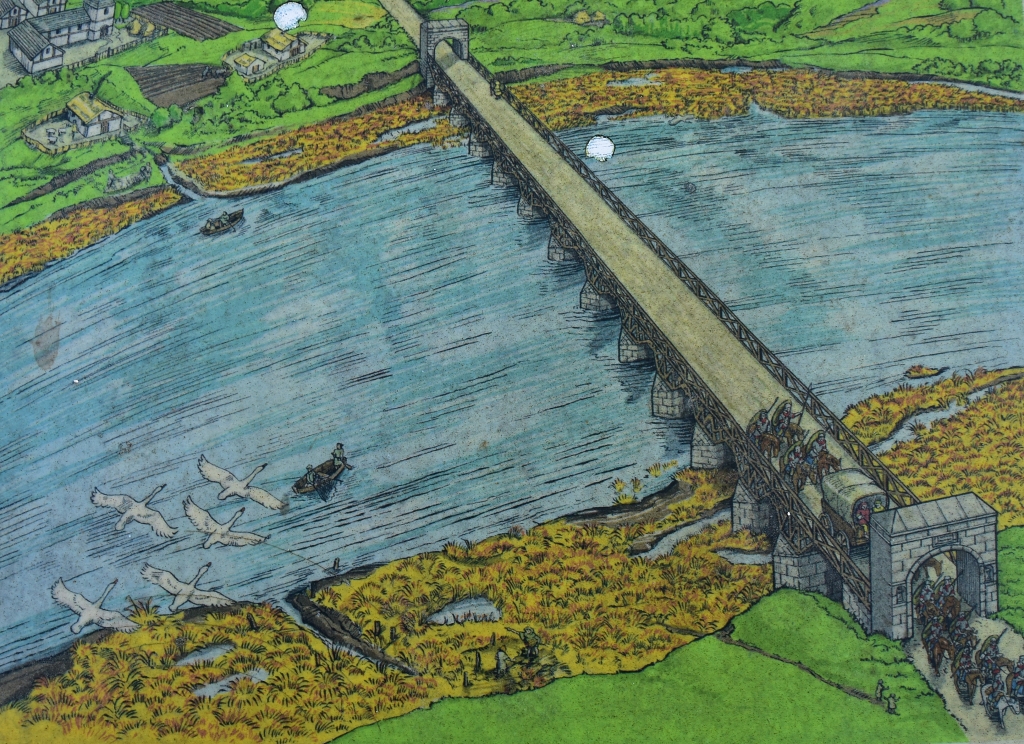 Artistic Impression of Piercebridge Roman Bridge (taken from English Heritage information board) © essentially-england.com
Artistic Impression of Piercebridge Roman Bridge (taken from English Heritage information board) © essentially-england.comNever having seen a Roman Bridge, we didn't know what to expect, or even how much of the bridge remained. Fortunately for us, there was an English Heritage information board in the car park. The artistic impression showed a substantial bridge, and the information board instructed us to climb over the car park's low boundary wall and follow the footpath.
Not knowing how far to walk and wondering why we were going away from the river made us worry. But it all became clear after a short walk…
Understanding Piercebridge Roman Bridge
I didn’t realise there were any Roman bridge sites in England, so Piercebridge Roman Bridge was a real find. At first sight the ruin looked like a jumble of rocks, but as I wandered around the site, read the information boards, and took a closer look I marvelled at the skill and craftsmanship required to build such a strong bridge almost 1800 years ago.
It’s strange to think that the bridge ruins were only found by chance in 1972 when extracting gravel from this farmer's field.
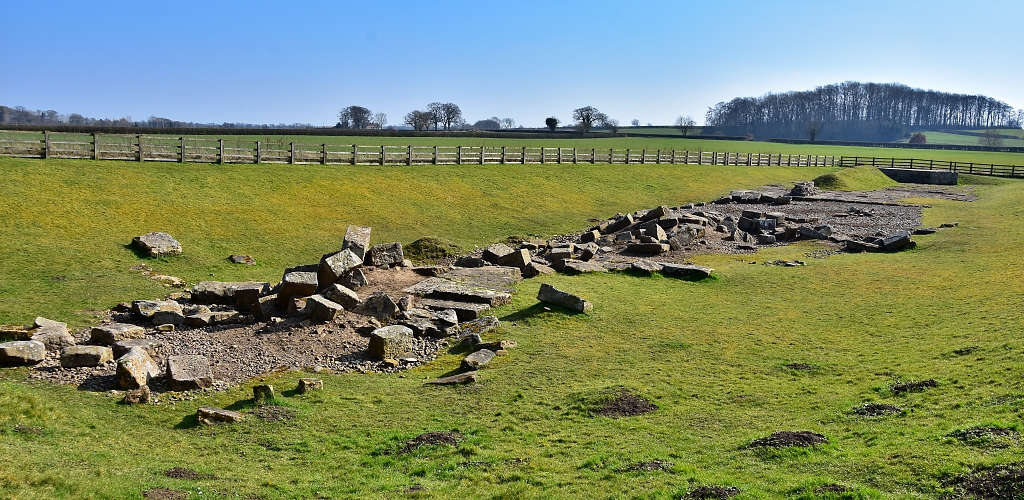 Piercebridge Roman Bridge Remains © essentially-england.com
Piercebridge Roman Bridge Remains © essentially-england.comThe source of the River Tees is in the Pennine Hills in Cumbria. Our visit in mid-March came on the heels of a stretch of dry weather, so the river looked calm and peaceful. However, heavy rain in the Pennine Hills turns the River Tees grows into an angry torrent. So, it’s no wonder that the first Roman bridge, a wooden construction that took Dere Street across the river Tees, was eventually washed away around the year 150.
The Romans re-routed Dere Street and built another stone bridge about 200 metres east of the old wooden bridge. And the remains we see today are the stonework foundations of the bridge built sometime after year 150.
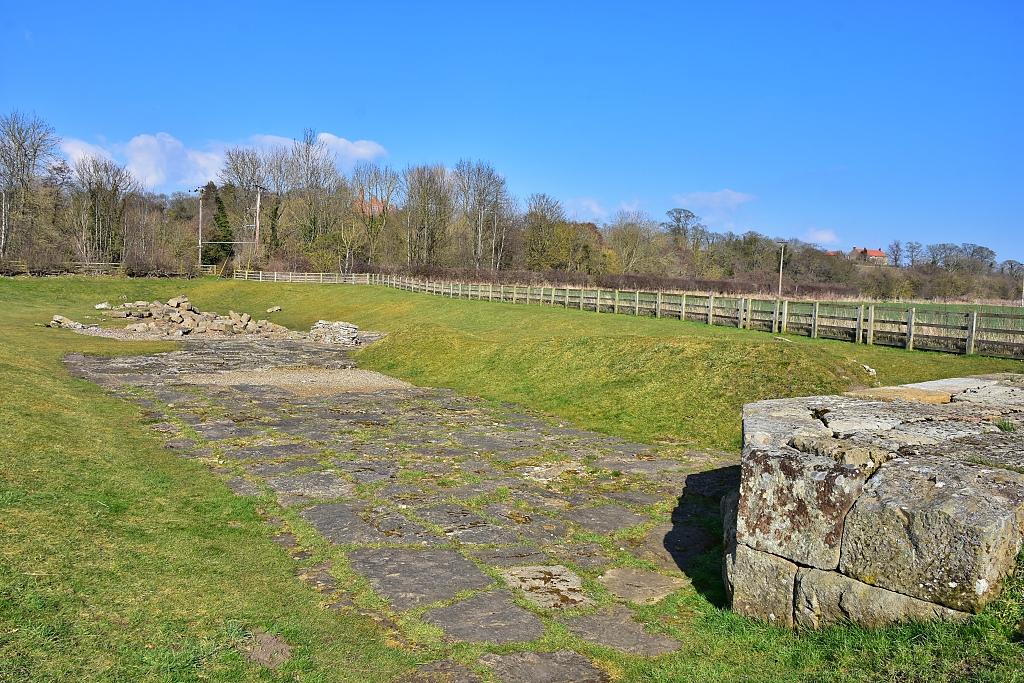 The South Abutment and Flagstones at Piercebridge Roman Bridge © essentially-england.com
The South Abutment and Flagstones at Piercebridge Roman Bridge © essentially-england.comThe bridge consisted of large stone abutments on each side of the river. Across the river stone piers were built, having a V-shape profile facing the flow of the water. Flagstones were laid between the piers to help smooth the flow of the river. The stones in the piers and abutments were secured together with iron braces to prevent the river washing away the foundations.
The stone foundations supported the wooden roadway, and the bridge may have looked something like the artistic impression below.
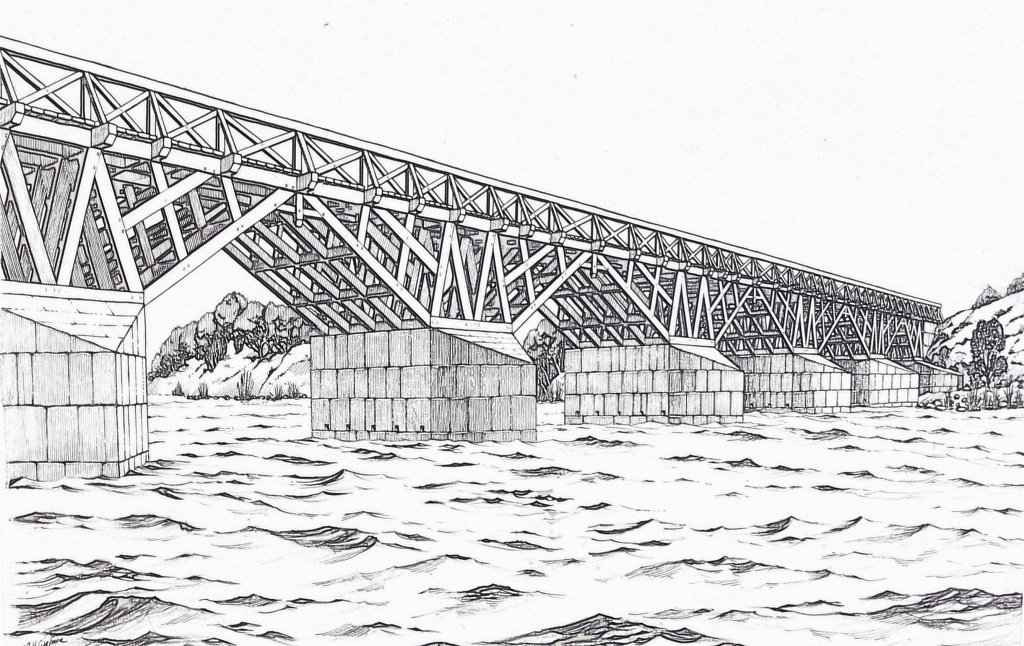 Artistic Impression of Piercebridge Roman Bridge (taken from English Heritage information board) © essentially-england.com
Artistic Impression of Piercebridge Roman Bridge (taken from English Heritage information board) © essentially-england.comBut the bridge remains are in a field. Where’s the water?
Over the last 2000 years, the River Tees has changed shape and course. We’ve also got to consider that the foundations on show are only a part of the original Roman stone bridge. The collage below shows; (top) the site of the wooden bridge, (middle) the position of the Roman stone bridge, and (bottom) the River Tees silting up on its southern bank and starting to move north.
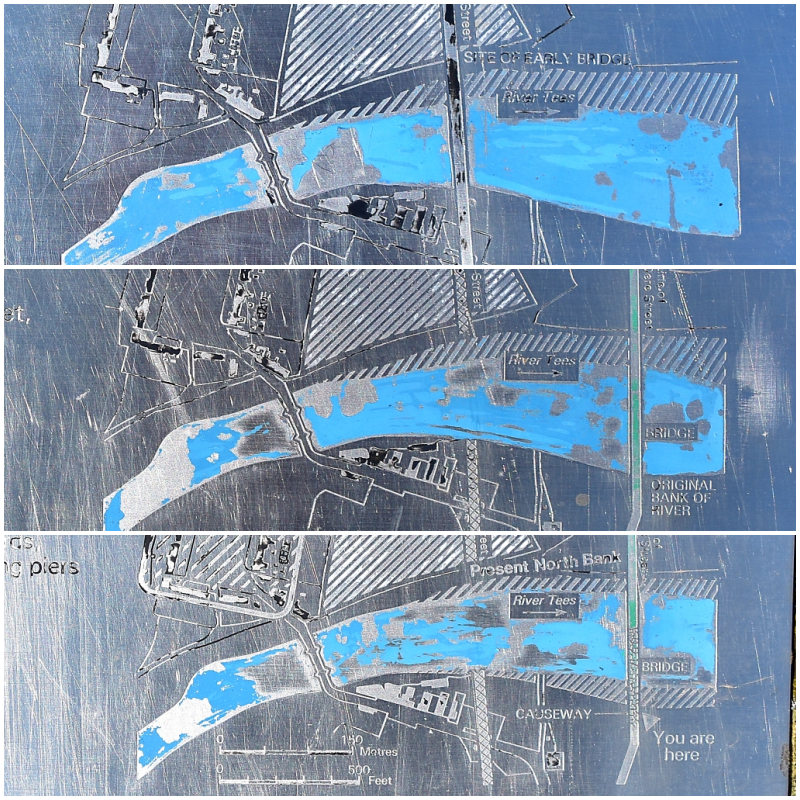 Collage Showing Wooden and Stone Bridge Positions as River Tees Alters Course
Collage Showing Wooden and Stone Bridge Positions as River Tees Alters Course (taken from English Heritage information board) © essentially-england.com
A few weeks after our visit to Piercebridge Roman Bridge we were catching up on our favourite history programs, “Time Team”, which have now been released on YouTube. And what do you know, they were visiting Piercebridge to investigate a Roman Fort. They were doing archaeological searches in the river and found evidence of a third, and earlier, wooden bridge. But the main interest was around the fort site, which looked like it had some nice foundations remaining. However, as we passed through Piercebridge there were no signs for the fort remains, only a mention of the bridge being related to a Roman fort on one of the English Heritage information boards.
So, if you’re visiting the Roman bridge, remember just the other side of the river near the church are some remains of the Roman fort!
And, naturally, on our next visit to Northumberland we had to stop in Piercebridge to discover the Roman Fort. You can read more about Roman Piercebridge here.
County Durham Holiday Cottages
County Durham, or more often just plain old Durham, is a county with a rich history and stunning natural landscapes. It makes for a great holiday or short break destination. There is the city of Durham with its castle and cathedral, a North Sea coastline, and hills and dales to explore.
To browse holiday cottages in other parts of England click here, or you could try our Booking.com search box.
If you have enjoyed reading about Piercebridge Roman Bridge and would like to explore other areas of England, then please return to our home page.


